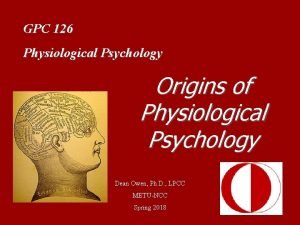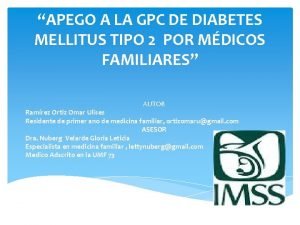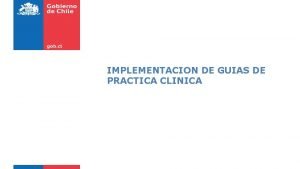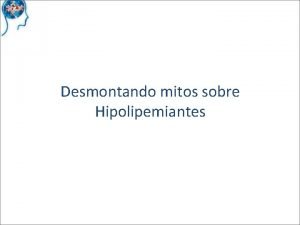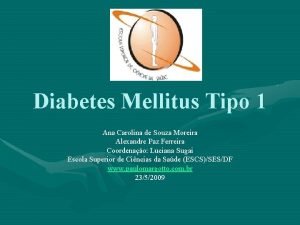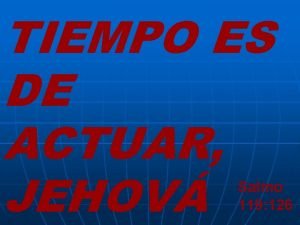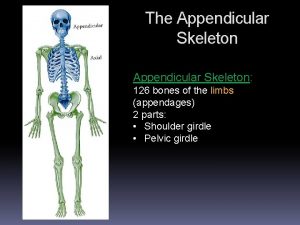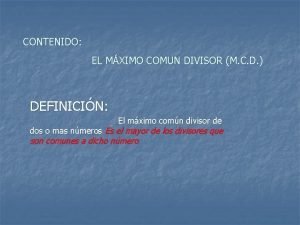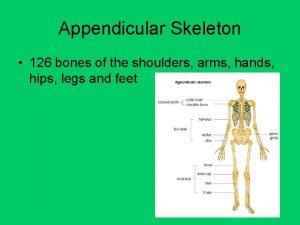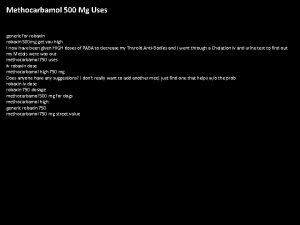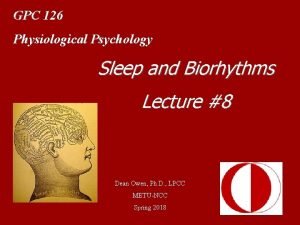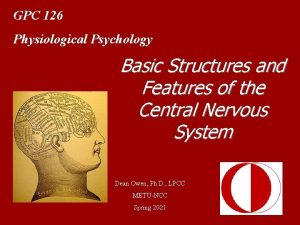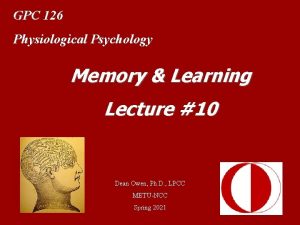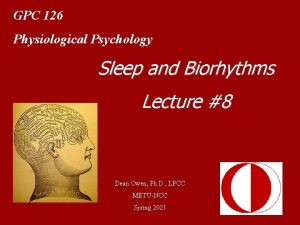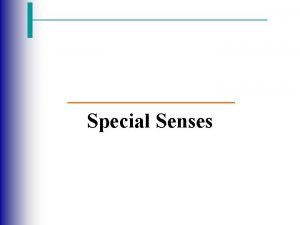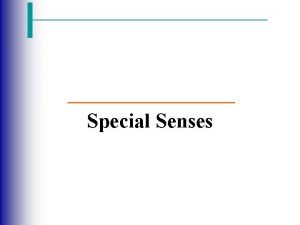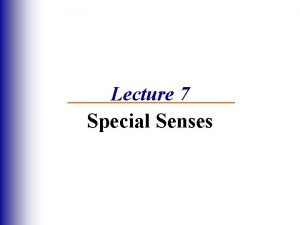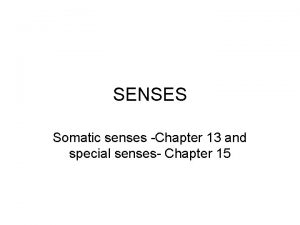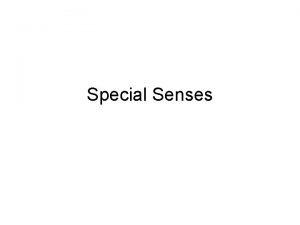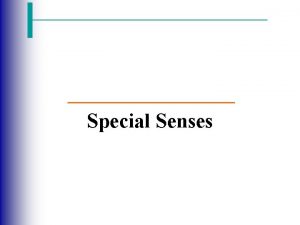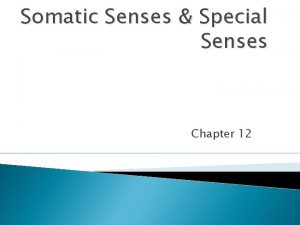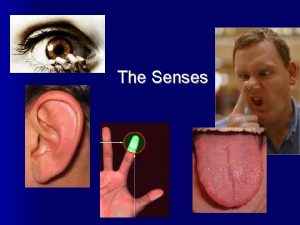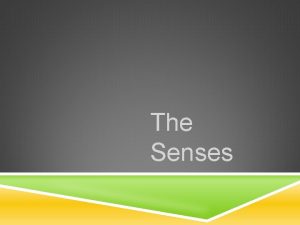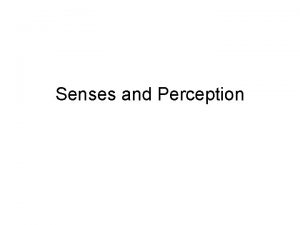GPC 126 Physiological Psychology The Senses Our windows























































































- Slides: 87

GPC 126 Physiological Psychology The Senses: Our windows to the world Dean Owen, Ph. D. , LPCC METU-NCC Spring 2021

Lecture 7 This presentation has been created to assist in the mastery of the material contained in Chapter 6 -7 of the text Foundations of Physiological Psychology by Neil R. Carlson All of the material contained in the presentation is drawn from the text.

Plan for the day 1. Results of Caffeine Survey 2. Review the fundamentals of sensation and sensory activation 3. Review the anatomy and physiology of the sensory organs 4. Review major categories of sensory disturbance and disease

Class Photo Time

But first…… Midterm 1 Results

Mean=29. 43, SD=5. 90, Range 22 points (38 to 16)

Caffeine Survey Results 19 Respondents 5 Male, 14 Female Total Caffeine 3 Day Baseline (3 day consumption) Day 1 (mean reported consumption) Males 6. 80 Females 4. 07 Day 2 (mean reported consumption) Males 7, 40 Females 2. 79 Day 3 (mean reported consumption) Males 7. 60 Females 3. 5 Males 7. 26 Females 3. 45

Caffeine Survey Results Activity Male 3. 00 Female 2. 64 1 Much Less 2 Less Energy Male 2. 80 1 2 3 No Change 4 More 5 Much More Female 2. 43 3 4 5

Caffeine Survey Results Focus Male 2. 60 Female 2. 21 1 Much Less 2 Less Need for rest Male 3. 4 1 2 3 No Change 4 More 5 Much More Female 3. 71 3 4 5

But first……. Where are you at this moment? ? How do you know that? ? What information are you using to make that decision? ? ? http: //www. birdcheck. co. uk/whackthep enguin. htm

Our senses Aristotle (384 BC - 322 BC) is generally credited with the classification system we use today recognizing the 5 basic senses… Hearing Smell Taste Touch Vision

Our senses We come to know our world through our innate abilities to perceive physical and chemical events around us…… Physical senses: Vision, Hearing and Touch Chemical senses: Taste and Smell

Sensation: the process by which we interact with our environment. Sensory receptor: Specialized type of neuron that has evolved to respond to environmental events…stimuli inside and outside of the individual Sensory transduction: transduction Physical stimuli impinging upon the sensory receptor trigger an electrical potential (receptor potential)

Anatomy of the Visual System Vision The Eye

Vision

Anatomy of the eye

Anatomy of the eye The Eye is a wonderfully adapted organ designed to respond to light…. . so what is “Light”…. Electromagnetic Radiation Hue: wavelength Brightness: intensity Saturation: purity

Anatomy of the eye Key Terms: Accomodation

Anatomy of the eye Key Terms: Accommodation

Anatomy of the eye Key Terms: Retina

Anatomy of the eye Key Terms: Photoreceptor A photoreceptor cell is a specialized type of neuron found in the retina that is capable of phototransduction. The great biological importance of photoreceptors is that they convert light (visible electromagnetic radiation) into signals that can stimulate biological processes. To be more specific, photoreceptor proteins in the cell absorb photons, triggering a change in the cell's membrane potential.

Anatomy of the eye Key Terms: Photoreceptor The two classic photoreceptor cells are rods and cones, each of which makes a contribution to sight. The rods are more sensitive to photon stimulation and are distributed more evenly across the retinal field. The cones are sensitive to a broad spectrum of light frequencies and are concentrated in high numbers in the fovea. A third class of photoreceptor cells was discovered during the 1990 s: ] the photosensitive ganglion cells. These cells do not contribute to sight directly, but are thought to support circadian rhythms and pupillary reflex.

Anatomy of the eye Key Terms: Rods and Cones Rods are extremely sensitive, and can be triggered by as few as 6 photons. At very low light levels, visual experience is based solely on the rod signal. This explains why colors cannot be seen at low light levels: only one type of photoreceptor cell is active. Dark adaptation: The process of enhanced visual sensitivity to light in low light environments…. may take up to 30 minutes to achieve maximum light sensitivity…….

Anatomy of the eye Pupillary reflex The pupillary light reflex is a reflex that controls the diameter of the pupil, in response to the intensity (luminance) of light that falls on the retina of the eye, thereby assisting in adaptation to various levels of darkness and light, in addition to retinal sensitivity. Greater intensity light causes the pupil to become smaller (allowing less light in), whereas lower intensity light causes the pupil to become larger (allowing more light in). Thus, the pupillary light reflex regulates the intensity of light entering the eye.

Anatomy of the eye Night Vision Key Terms: Rods and Cones

Anatomy of the eye Key Terms: Rods and Cones require significantly brighter light (i. e. , a larger numbers of photons) in order to produce a signal. In humans, there are three different types of cone cell, distinguished by their pattern of response to different wavelengths of light. Color experience is calculated from these three distinct signals, perhaps via an opponent process. S, M, & L are three types of cone cells and they respond (roughly) to light of short, medium, and long wavelengths.

Anatomy of the eye Key Terms: Rods and Cones

Anatomy of the eye Key Terms: Rods and Cones The human retina contains: Approximately 120 million rod cells 6 million cone cells. The number and ratio of rods to cones varies among species, dependent on whether an animal is primarily diurnal or nocturnal.

Anatomy of the eye Key Terms: Optic disk The optic disc or optic nerve head is the location where ganglion cell axons exit the eye to form the optic nerve. There are no light sensitive rods or cones at this exit point and so this area is a blind spot in the visual field. The optic disk represents the beginning of the optic nerve. Can you find your “blind spot”?

Anatomy of the eye Key Terms: Bipoloar/ ganglion Cells A bipolar neuron functions to transmit information from the photoreceptor cells to the ganglion cell which, in turn, converge to form the optic nerve exiting the eye at the location of the optic disk.

Anatomy of the eye http: //www. youtube. com/watch? v=ajns. DVs. P 0 Uk

Anatomy of the eye Key Terms: Fovea More properly, the fovea centralis. That region of the macula which provides us with sharp, central vision necessary for things like reading, driving, sewing…. etc.

Anatomy of the eye Optic Chiasma

Anatomy of the eye Blurred vision (refractive errors) Nearsightedness (called myopia) is when you can see clearly up close but blurry in the distance. Farsightedness (called hyperopia) is when you can see clearly in the distance but blurry up close. Presbyopia is age related and caused by loss of elasticity of the lens…in ability to focus for older people (after age 40). One in every three people 40 years or older in the U. S. will need glasses to read smaller print. Astigmatism is another condition that causes blurred vision, but it is because of the shape of the cornea.

Anatomy of the eye Age-Related Macular Degeneration (AMD) AMD is a disease that blurs the sharp, central vision needed to see straight-ahead. It affects the part of the eye called the macula that is found in the center of the retina. The macula lets a person see fine detail and is needed for things like reading and driving. Risk Factors Type 1 or 2 diabetes Poor control of blood sugar level High blood pressure High cholesterol Pregnancy Being African American or Hispanic Smoking

Anatomy of the eye Glaucoma There are different types of glaucoma, but all of them cause vision loss by damaging the optic nerve. The most common type of glaucoma happens because of slowly increasing fluid pressure inside the eyes. Vision loss from glaucoma cannot be corrected. But if it is found early, vision loss can be slowed or stopped. Anyone can have glaucoma, but some people are at higher risk of developing the disease. Family history is a good indicator.

Anatomy of the eye Cataract A cataract is a clouding of the lens of the eye. It often leads to poor vision at night, especially while driving, due to glare from bright lights. Cataracts are most common in older people, but can also occur in young adults and children. Cataract treatment is very successful and widely available. Risk Factors Age, cataracts are more common after age 60 Certain diseases such as diabetes Smoking and alcohol use Too much exposure to sunlight

Anatomy of the eye Diabetic Retinopathy (DR) All people with diabetes, both type 1 and type 2, are at risk for DR. It is caused by damage to blood vessels in the back of the eye (retina). The longer someone has diabetes, the more likely he or she will get DR. Risk Factors Type 1 or 2 diabetes, poor control of blood sugar level, High blood pressure, High cholesterol, Pregnancy, Smoking

A Little Test for You…. Read the following text and count the number of “F”s you find FINISHED FILES ARE THE RE SULT OF YEARS OF SCIENTI FIC STUDY COMBINED WITH THE EXPERIENCE OF YEARS. . . How many did you find? 6

Optical illusions/Visual Illusions 1. Ambiguous illusions arise from the mind’s attempt to understand a figure while at least two explanations exist…. . Rubin’s vase

Optical illusions/Visual Illusions 2. Distorting or geometrical-optical illusions are characterized by distortions of size, length, position or curvature. A common example is the Café wall illusion. Café Wall

Optical illusions/Visual Illusions 2. Distorting or geometrical-optical illusions. Other examples are the famous Müller-Lyer illusion

Optical illusions/Visual Illusions 3. Paradox illusions present impossible events…. . Penrose Triangle

Optical illusions/Visual Illusions 3. Paradox illusions present impossible events…. . Penrose Stairs

Anatomy of the Somatic Sensory System Touch The Skin

It’s more than “Touch” somato-sensory The system is a diverse sensory system comprising the receptors and processing centers to produce the sensory modalities including: touch temperature proprioception (body position) nociception (pain).

It’s more than “Touch” somato-sensory The system is a diverse sensory system comprising the receptors and processing centers to produce the sensory modalities including: touch temperature proprioception (body position) nociception (pain).

It’s more than “Touch” somato-sensory The system is a diverse sensory system comprising the receptors and processing centers to produce the sensory modalities including: touch temperature Proprioception (body position) nociception (pain).

It’s more than “Touch” Proprioception (body position) Balance test…. What's your balance-based Real. Age? Balance Time Balance-Based Real. Age 4 seconds 5 seconds 7 seconds 8 seconds 9 seconds 70 years 65 years 60 years 55 years 50 years 12 seconds 45 years 16 seconds 40 years 22 seconds 30 -35 years 28 seconds 25 -30 years

It’s more than “Touch” somato-sensory The system is a diverse sensory system comprising the receptors and processing centers to produce the sensory modalities including: touch temperature Proprioception (body position) nociception (pain).

Leprosy, also known as Hansen's disease (HD), is a chronic disease caused by the bacteria Mycobacterium leprae and Mycobacterium lepromatosis. Named after physician Gerhard Armauer Hansen, leprosy is primarily a granulomatous disease of the peripheral nerves and mucosa of the upper respiratory tract; skin lesions are the primary external sign. Source: World Health Organization

More than one type of receptor

Somato-sensory Pathway

Anatomy of the Olfactory System Smell (Olfaction) The nasal membranes

Anatomy of the Olfactory System 1: Olfactory bulb 2: Mitral cells 3: Bone 4: Nasal Epithelium 5: Glomerulus 6: Olfactory receptor cells

Anosmia (loss of olfactory sensation) Risk Factors Damage to the olfactory system can occur by traumatic brain injury, cancer, infection, inhalation of toxic fumes, or neurodegenerative diseases such as Parkinson's disease and Alzheimer's disease.

Anatomy of the Gustatory System Taste Gustation

Anatomy of the Gustatory System Taste Gustation The Tongue

Anatomy of the Gustatory System Distribution of chemical receptor cells

Anatomy of the Auditory System Audition http: //www. youtube. com/watch? v=qgdqp-o. Pb 1 Q

Anatomy of the Auditory System Audition

Anatomy of sound Sound Frequency: Pitch Hertz (Hz) Intensity: Volume Decibels (Db)

Anatomy of the Auditory System Vestibular System This system makes all of the following possible…. .

Vestibular System

Vestibular System Controls Balance and Spatial Orientation This system is the primary source of information about movement and a sense of balance. The system senses rotations and linear accelerations and sends information to the eyes and to the muscles that control balance.

Kinesthesia: Perception of the body’s own movement. Proprioception vs Kinesthesia

Hearing Loss

Hearing Loss Presbycusis, gradual age-related hearing loss is common. 1/3 of individuals between 65 -75 have some hearing loss 1/2 over the age of 75 have some hearing loss Primary causes: Heredity and exposure to loud noises are the biggest risk factors. Source: http: //www. mayoclinic. com/health/hearing-loss/DS 00172/DSECTION=risk-factors

Anatomy of the Auditory System Risk Factors Aging. The accumulated damage over a lifetime of exposure to noise can damage hearing. Heredity. A history of early hearing loss in your family may pre-dispose you to loss. Occupational noises. Jobs that expose individual to constant high levels of sound or jobs that may expose an individual to occasional but severely intense sound can lead to damage. (Intensity vs chronicity)…… Source: http: //www. mayoclinic. com/health/hearing-loss/DS 00172/DSECTION=risk-factors

Anatomy of the Auditory System Risk Factors Recreational noises. Source: http: //www. mayoclinic. com/health/hearing-loss/DS 00172/DSECTION=risk-factors

Safe sound levels 30 db 60 db 70 db Source: http: //www. mayoclinic. com/health/hearing-loss/DS 00172/DSECTION=risk-factors

85 -90 db Risky sound levels 95 db 110 db Source: http: //www. mayoclinic. com/health/hearing-loss/DS 00172/DSECTION=risk-factors

Dangerous sound levels 120 db 185 db 140 db (Pain threshold) Source: http: //www. mayoclinic. com/health/hearing-loss/DS 00172/DSECTION=risk-factors

Anatomy of the Auditory System Risk Factors Some medications. Drugs, such as the antibiotic gentamicin and certain chemotherapy drugs, can damage the inner ear. Temporary effects on your hearing — ringing in the ear (tinnitus) or hearing loss — can occur if you take very high doses of aspirin, other pain relievers, antimalarial drugs or loop diuretics. Some illnesses. Diseases or illnesses that result in high fever, such as meningitis, may damage the cochlea. Source: http: //www. mayoclinic. com/health/hearing-loss/DS 00172/DSECTION=risk-factors

Causes of hearing loss Genetic causes Syndromic: Deafness is the result of an illness and hearing loss is only one symptom, among many others, of the disease. (30%) Nonsyndromic: Deafness is the only result of this genetic defect. (70%) Source: World Health Organization

Causes of hearing loss Illness Measles (kızamık) Source: World Health Organization

Causes of hearing loss Illness Meningitis (menenjit) Mumps kabakulak Source: World Health Organization

Causes of hearing loss Illness Chlamydia (STD) Chlamydia Presbycusis Loss of blood flow to ear. . Source: World Health Organization

Causes of hearing loss Illness Fetal alcohol syndrome (64%) Fetal alkol sendromu Source: World Health Organization

Causes of hearing loss Illness Syphilis Frengi 1/3 of Children will become deaf . + many, many more…… Source: World Health Organization

Causes of hearing loss Neurological Disorders Multiple Sclerosis Strokes Brain tumors Source: World Health Organization

Causes of hearing loss Medication This includes some diuretics, aspirin, non steroidal antiinflammatory drugs (NSAIDs), Antibiotics, antimalarials Source: World Health Organization

Causes of hearing loss Chemical Exposure Solvents toluene, styrene, xylene, n-hexae, ethyl benzene, white spirits/Stoddard, carbon disulfide, fuels, perchloroethylene, trichloroethylene, p-xylene Asphyxiants carbon monoxide, hydrogen cyanide Metals lead, mercury, organotin compounds (trimethyltin) Pesticides/Herbicides paraquat, organophosphates Source: World Health Organization

Causes of hearing loss Trauma Neurological hearing loss Damage to the ear Damage to the brain Source: World Health Organization

Homework Assignment for next week Due 11 May Complete Sleep Log The sleep log form and instructions are posted on the class webpage as a word document.

and finally, some more housekeeping Please help me return the classroom to it original condition…. . 1. Take your rubbish with you…… 2. Place the student desks in their original order. Thank you…. , Gracias, Merci, Danke, teşekkür ederim, ありがとう, Asante, gratias ago vos, Dank u, Takk skal du ha, спасибо ……

Too many drugs? ? Harika!!
 Army gpc guidebook
Army gpc guidebook What is the difference between somatic and special senses
What is the difference between somatic and special senses General senses vs special senses
General senses vs special senses History of physiological psychology
History of physiological psychology Bartolinitis gpc
Bartolinitis gpc Gpc triple detection
Gpc triple detection Imcc jetty
Imcc jetty Insights on demand gpc
Insights on demand gpc Diabetes mellitus gpc
Diabetes mellitus gpc Gpc viscometer
Gpc viscometer Rinitis alergica gpc
Rinitis alergica gpc Gpc
Gpc Gpc classification
Gpc classification Clasificacion de fredrickson
Clasificacion de fredrickson Gpc management
Gpc management Anatomia del ano y recto
Anatomia del ano y recto Efeito somogyi e alvorecer
Efeito somogyi e alvorecer How to increase audio volume in windows movie maker
How to increase audio volume in windows movie maker Windows media player 9 windows 2000
Windows media player 9 windows 2000 Mailprogramma windows 7
Mailprogramma windows 7 Windows driver kit windows 7
Windows driver kit windows 7 Windows movie maker download microsoft
Windows movie maker download microsoft Windows media player skins windows 10
Windows media player skins windows 10 Windows identity foundation windows 10
Windows identity foundation windows 10 Windws update
Windws update Windows xp virtual hard disk download
Windows xp virtual hard disk download Windows mobile center windows 10
Windows mobile center windows 10 Windows movie maker 2012
Windows movie maker 2012 Ipseq
Ipseq Windows 10 xp mode
Windows 10 xp mode Thinking affects our language which then affects our
Thinking affects our language which then affects our Our census our future
Our census our future Bernadette farrell christ be our light
Bernadette farrell christ be our light Marcus aurelius our life is what our thoughts make it
Marcus aurelius our life is what our thoughts make it We bow our hearts
We bow our hearts Our census our future
Our census our future Our life is what our thoughts make it
Our life is what our thoughts make it Who is poet of money madness
Who is poet of money madness Our awareness of ourselves and our environment
Our awareness of ourselves and our environment Awareness of ourselves and our environment is:
Awareness of ourselves and our environment is: God our father christ our brother
God our father christ our brother Our future is in our hands quotes
Our future is in our hands quotes Our awareness of ourselves and our environment
Our awareness of ourselves and our environment Awareness of ourselves and our environment
Awareness of ourselves and our environment Salmo 119:126
Salmo 119:126 126 appendicular bones
126 appendicular bones Akar dari 4356
Akar dari 4356 As lições do salmo 124
As lições do salmo 124 Ee 126
Ee 126 Numberblock 126
Numberblock 126 Factors of 126
Factors of 126 Fanatic eagle 126
Fanatic eagle 126 Binary of 126
Binary of 126 Cos126
Cos126 Máximo común divisor de 90 y 126
Máximo común divisor de 90 y 126 Teacher certification lookup ct
Teacher certification lookup ct Ip binary to decimal
Ip binary to decimal Appendicular skeleton 126 bones
Appendicular skeleton 126 bones Ee 126
Ee 126 Factor tree radicals
Factor tree radicals Act 126
Act 126 Salmo 126
Salmo 126 Nkb 127
Nkb 127 Ipc 4562
Ipc 4562 Uiuc cs 126
Uiuc cs 126 Pb-208 isotope
Pb-208 isotope 126 ce
126 ce 8 elmanın yarısı kaç elmadır
8 elmanın yarısı kaç elmadır Sformuowanie
Sformuowanie Shakespeare sonnets
Shakespeare sonnets Unsigned binary integer
Unsigned binary integer Pergub 126 tahun 2019
Pergub 126 tahun 2019 Arch pg
Arch pg 126/63 blood pressure
126/63 blood pressure Lions district 126
Lions district 126 Hình ảnh bộ gõ cơ thể búng tay
Hình ảnh bộ gõ cơ thể búng tay Bổ thể
Bổ thể Tỉ lệ cơ thể trẻ em
Tỉ lệ cơ thể trẻ em Voi kéo gỗ như thế nào
Voi kéo gỗ như thế nào Chụp phim tư thế worms-breton
Chụp phim tư thế worms-breton Hát lên người ơi
Hát lên người ơi Các môn thể thao bắt đầu bằng tiếng đua
Các môn thể thao bắt đầu bằng tiếng đua Thế nào là hệ số cao nhất
Thế nào là hệ số cao nhất Các châu lục và đại dương trên thế giới
Các châu lục và đại dương trên thế giới Công của trọng lực
Công của trọng lực Trời xanh đây là của chúng ta thể thơ
Trời xanh đây là của chúng ta thể thơ Mật thư anh em như thể tay chân
Mật thư anh em như thể tay chân



